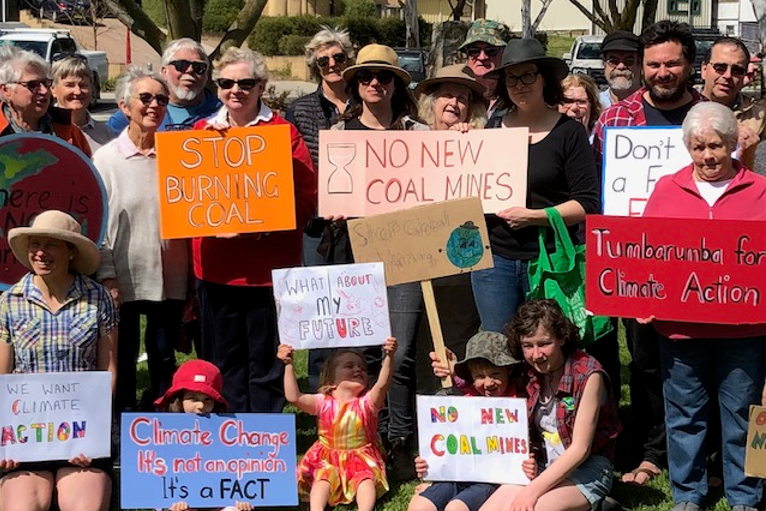first published by The Canberra Times
How fast does Australia need to reduce greenhouse emissions to play its fair part in responding to the global climate emergency?
One answer jumps out: “net-zero emissions by 2050”. Suddenly almost everybody is clambering aboard this train: state governments, big business, investors, mining companies such as BHP, Rio Tinto and Shell, and community advocacy organisations.
But there is a problem: what if this target is just another bit of the colonialism we rejected long ago? A sense of entitlement in this rich, developed country to keep on polluting for another three decades, a country whose leaders insist its wealth must continue to be built on a high output of greenhouse emissions, in the process denying some of the poorest and least developed nations their very survival? Particularly our neighbours in the Pacific.
Look at the numbers. The Intergovernmental Panel on Climate Change suggests a “carbon budget”, the maximum amount of further global emissions that would still give the world a chance to keep warming less than 2 degrees relative to pre-industrial levels. This proposition has serious flaws.
First, 2 degrees is not a good target. Even at the 1.3 degrees global warming this year, climate disruption is dangerous: the Great Barrier Reef and Arctic sea ice are already in a death spiral, with the West Antarctic ice sheet past a multi-metre sea-level-rise tipping point. Other systems such as the Greenland ice sheet and the Amazon may also be close to tipping.
Second, the “carbon budget” brings with it a catastrophic risk of failure, namely that warming has a 33 to 50 per cent chance of exceeding 2 degrees, perhaps substantially. We would not take such risks with our own lives day-to-day, for example boarding a plane knowing it had a one-in-three or 50-50 chance of crashing. Why do so with the future of our civilisation, which is what exceeding 2 degrees means?
But let’s dig further into the implications of this “carbon budget” for Australia. The IPCC global carbon budget for 2 degrees, with a 67 per cent chance of staying below the target, is 1170 billion tonnes of carbon dioxide, starting from January 2018.
How is that budget to be shared? There is a strong argument that developing nations with small contributions to carbon pollution so far should have more right to any remaining budget than those people in the developed world. Put aside that argument for a moment, and let’s divide that budget equally amongst the world 7.8 billion people. It works out to 150 tonnes per person from now on.
Australia’s current per capita carbon footprint is at least 20 tonnes per year. On that basis, our 150 tonnes per person would last seven-and-a-half years, starting in 2018. At the current rate, we are out of budget by 2025!
So how can we have a conversation about “net-zero by 2050” being a fair contribution? The fact is we can’t as it isn’t. Any thought of climate justice has to be suppressed to justify this approach. It is not fair or reasonable, rather it is climate colonialism.
Climate justice is the idea that in advocating responses to climate disruption, priority should be given to protecting those most vulnerable to the impacts of the disruption. There are two elements: first, to advocate mitigation action, ameliorating or removing the threat to the extent possible; second, to recognise that the priority in adapting to impacts which cannot be avoided must be to retain the economic capacity of the worst affected. “Net-zero by 2050” for wealthy Australia is an absolute negation of climate justice principles.
The Prime Minister’s latest dog-whistling, that he “will not be dictated to by other government’s climate change goals”, apes John Howard’s 1997 “Safeguarding the Future” statement, which began Australia’s ongoing climate denial.
The resulting decades of inaction have eliminated our options for a gradual response. To avoid catastrophic outcomes, the Breakthrough National Centre for Climate Restoration’s latest analysis of climate risk, Climate Reality Check 2020, indicates that net-zero emissions will have to be reached globally by 2030, not 2050. A massive task, requiring the emergency action communities across the world increasingly demand.
Yet much of our polity still cannot bring themselves to accept human-induced climate change is real, as Minister Taylor’s target-free techno-optimistic “road map” demonstrates. In Lewis Carroll’s words: “If you don’t know where you are going, any road will get you there.”
But we do know: it is net-zero emissions by 2030, not 2050.
The colonialist mentality is also evident domestically. Politicians pretend our high-carbon status quo can continue indefinitely, to avoid the loss of ideological face which will come from the admission that climate change is really happening. In the process they leave those who will be worst affected by climate impacts totally unprepared for the transition which is inevitably coming.
We have solutions; they require a concerted national commitment, setting aside ideology and applying Australia’s best expertise and innovation to get us there. We have seen it to a limited extent during the pandemic. That must now happen with the much greater and longer challenge of climate change.
Otherwise we are just colonialists, arrogantly prepared to destroy poorer nations, and our own people, to compensate for our refusal to face climate realities.
Teaser photo credit: By School Strike – Tumbarumba, CC BY 2.0, https://commons.wikimedia.org/w/index.php?curid=82348781





